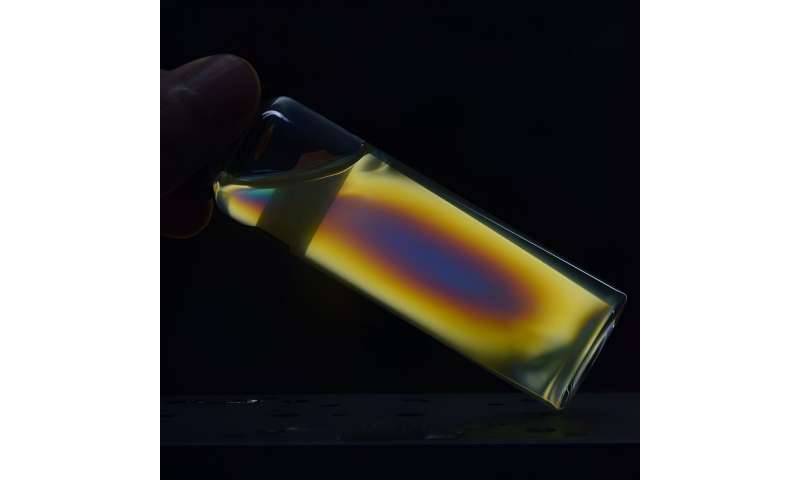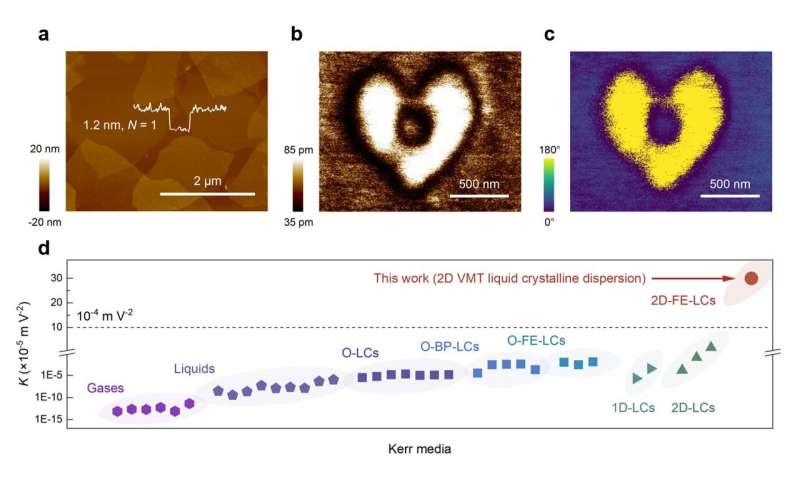The discovery of an inorganic 2D ferroelectric liquid crystal

Electro-optical liquid crystal (LC) device with wide applications is a cornerstone of the information society, which can continuously and dynamically modulate the light intensity, polarization, and phase retardation. An ancient theoretical insight proposes that an LC material with both an extremely large geometrical anisotropy and an inherent electric dipole is highly expected to improve the electric field responsivity of LCs.
However, neither commercial organic LC molecules nor R&D LC nanomaterials meet both aforementioned perquisites, while such LCs have not been reported so far. As for now, there are open questions for the LC community about whether such an LC exists and the upper limit of its electric field responsivity.
In response to these questions, for the first time, the research team led by Professor Bilu Liu from Tsinghua Shenzhen International Graduate School, Tsinghua University, revealed the ferroelectricity in a century-old clay mineral, vermiculite, in its monolayer limit.
The two-dimensional (2D) vermiculite possesses an extremely large geometrical anisotropy, and the ferroelectricity endows an inherent electric dipole. By dispersing 2D vermiculite in deionized water, the research team prepares an LC dispersion with 2D ferroelectric moieties. Its electric field responsivity, i.e., the Kerr coefficient, raises the record value of the Kerr coefficient by an order of magnitude.
Considering that the 2D vermiculite LC represents a new class of inorganic lyotropic LC with 2D ferroelectric materials, the physical insights provided in this work, such as the relationship between the responsivity and geometrical anisotropy of LC materials, have universality to other potential similar LCs.

The breakthrough of the electric field responsivity enables an ultra-low operational electric field and the fabrication of electro-optical LC devices with an inch-level electrode separation, which is not practical previously. A large-scale and energy-efficient prototypical displayable billboard with inch-scale pixels has been fabricated for outdoor interactive scenes, where the letters and digits can be shown on it controlled by smartphone software or human gestures.
"Scientifically, we give a new strategy to design advanced inorganic LCs or LC-like systems with sensitive electric field responsivity. The key is to prepare 2D ferroelectric materials dispersion from layered bulk." Prof. Bilu Liu said, "From another perspective, the inspiring evidence on 2D ferroelectricity in layered natural minerals bring new opportunities for scalable production and practical application of van der Waals ferroelectric materials."
More information:
Ziyang Huang et al, An inorganic liquid crystalline dispersion with 2D ferroelectric moieties, National Science Review (2024). DOI: 10.1093/nsr/nwae108
Provided by Science China Press